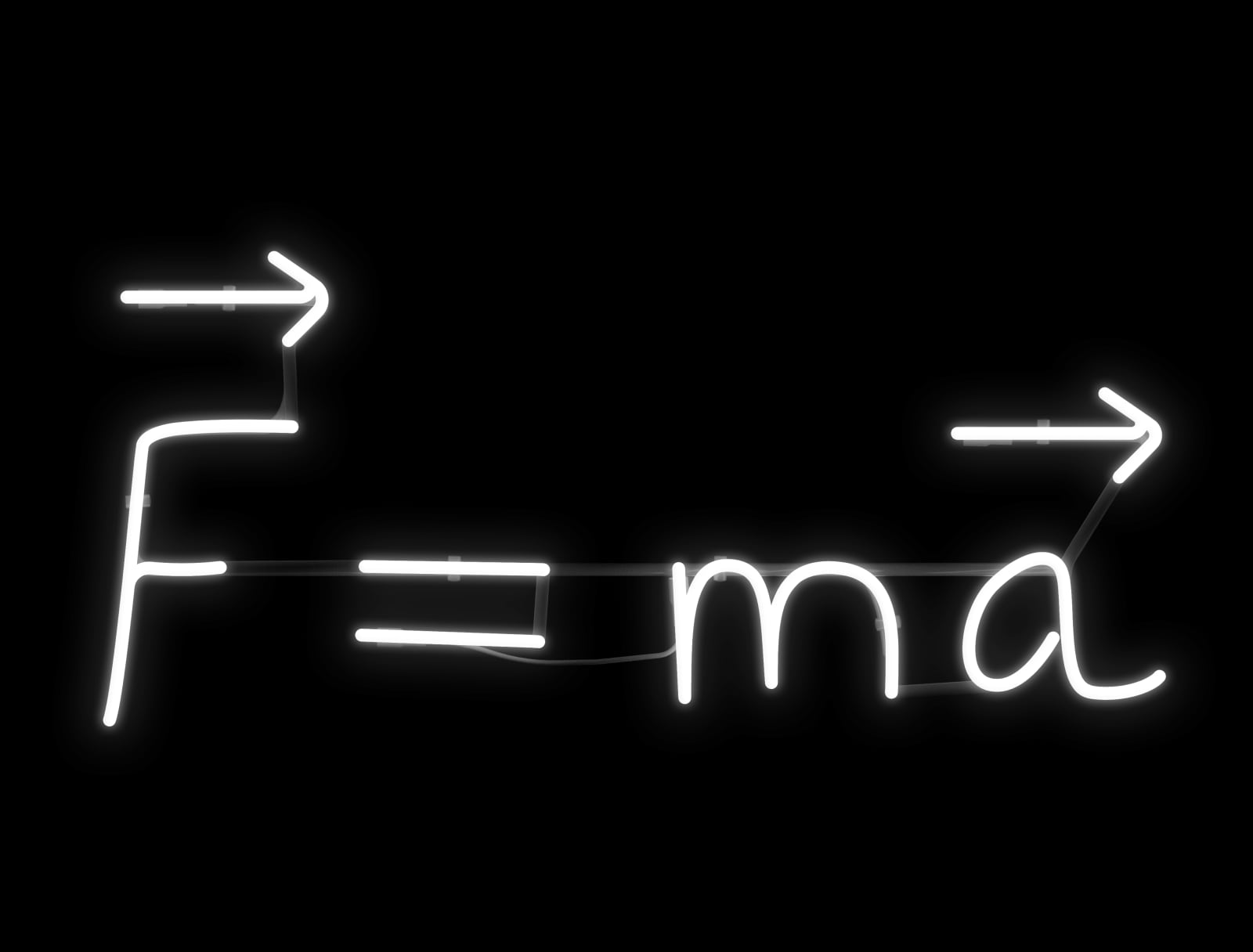Andrea Galvani Italy, b. 1973
Newton’s Second Law of Motion describes motion in terms of the force exerted on a body. If we apply a force F, this causes an acceleration a in the same direction of the force. It’s like the 1+1=2 of classical mechanics: in straightforward language, it seems to say “push something and it moves.” It may appear simple, but if we look closely, F=ma is very mysterious. It implies that if no force is exerted, there will be no change in velocity, and momentum (sometimes called “the amount of motion”) will remain constant. The idea that motion would persist in the absence of forces was radical at the time. It seems incompatible with the world we know, where we have to continuously exert force upon something in order to keep it moving at the same speed (we had to wait another couple hundred years for Einstein to discover the interchangeability of mass and energy described by E=mc2). F=ma disclosed a rather disturbing, counter- intuitive thought that conflicted with Aristotle’s teachings, which formed the widely accepted view for thousands of years. To arrive at this equation, human beings had to learn how to look at motion in new ways—to see the different aspects of it, and to change how we thought about what we saw. Galvani’s neon illuminates Newton’s profound insight: motion is not an action but a state.
